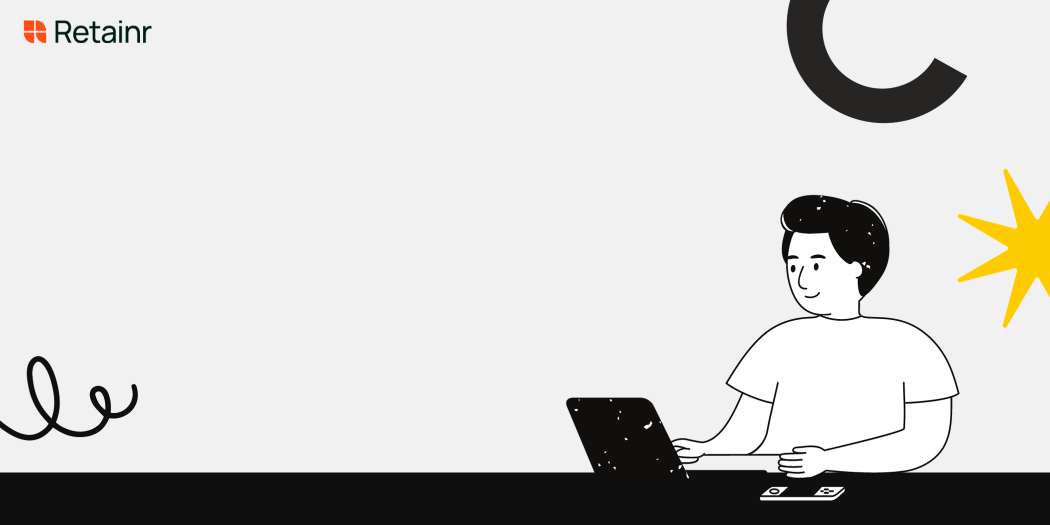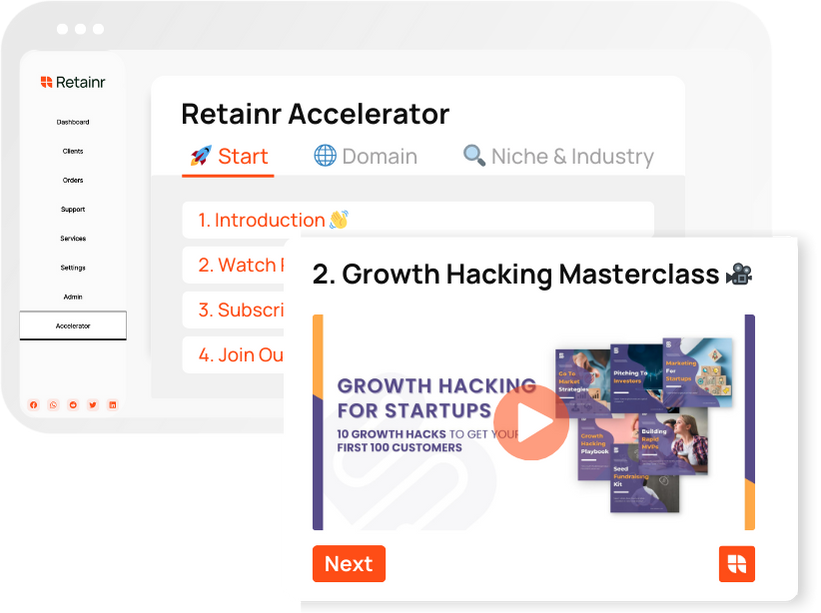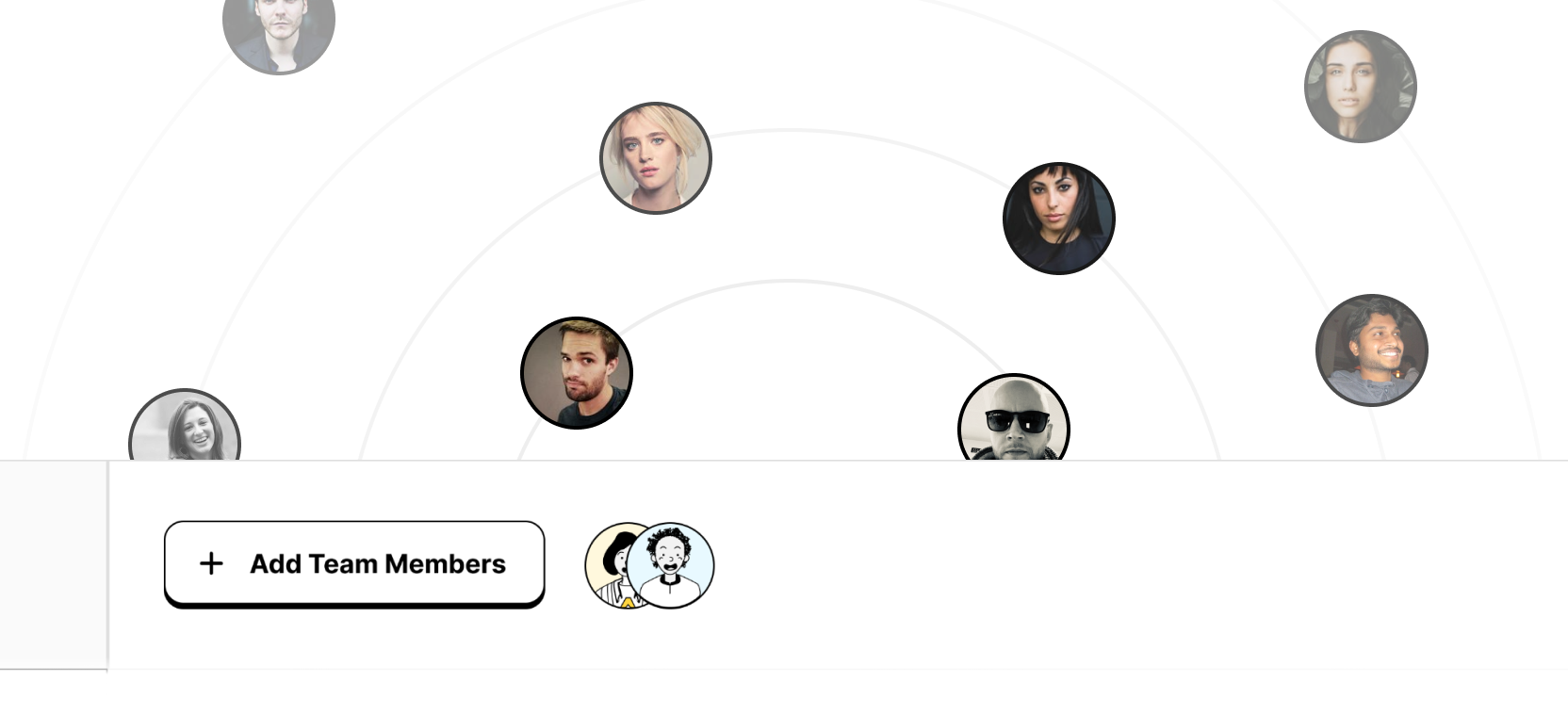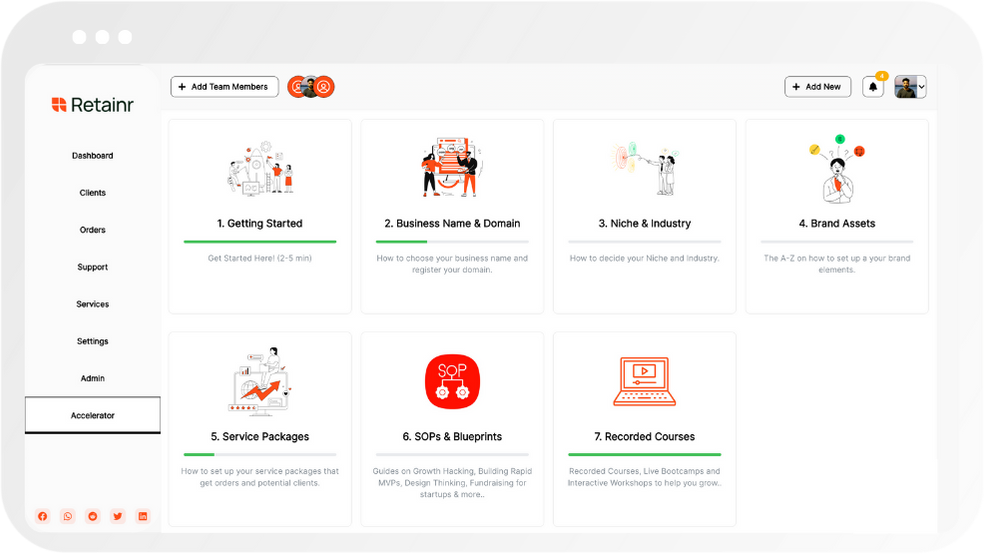
6 Tips and Tricks to Create Stunning Graphic Designs for Clients
Build with Retainr
Sell your products and services, manage clients, orders, payments, automate your client onboarding and management with your own branded web application.
Get Started1. What are some key tips and tricks for creating captivating graphic designs for clients?
Understanding Client Requirements
Designing for clients entails more than just showcasing your design prowess. It requires a keen understanding of the client's needs and intentions. To nail this:
- Invest time in understanding their business:
- Listen to their ideas
- Take note of their design preferences
- Get clarity on their expectations
| Comprehend the company's culture | Gather info on target audience |
| Understand the company's markets | Know the brand personality and voice |
Mastering the Principles of Design
Creating captivating graphic designs requires you to understand and adeptly use the principles of design. This ensures that your design is not only visually stunning but also effective in communicating the intended message. This involves:
- Employing a balance of elements
- Emphasizing key points
- Aligning elements for visual connectivity
- Using repetition to strengthen the design
- Facilitating movement to guide the viewer
- Matching form to function
Some principles like contrast, hierarchy, and scale/proportion can be applied using:
| Principle | Application |
|---|---|
| Contrast | Using differing shapes, sizes, and colors |
| Hierarchy | Creating visual order through arrangement & presentation |
| Scale/Proportion | Creating a relationship between elements |
Utilize the Right Tools and Stay Updated
A graphic designer's toolkit plays a crucial role in creating enticing designs. This comprises of the right hardware, software, and continuous skills updates:
- Explore diverse design software: Adobe Suite (Illustrator, Photoshop, InDesign), CorelDraw, Sketch, etc.
- Equip with powerful hardware: High-spec computer, graphics tablet, etc.
- Continually learn and experiment with new design trends
- Stay updated with the design industry and community
2. How can I create stunning graphic designs that meet my client's expectations?
Understand your Client's Vision and Expectations
Creating a stunning graphic design that matches your client's expectations starts with understanding your client's vision and goals. Request your client to provide some examples of designs they like or a mood board to get a taste of their style. You can also have a straightforward discussion about design aesthetics to get a clear understanding of their needs. The success of your design highly depends on the accuracy of your understanding of the client's needs.
Implementing the Design
Once you have a clear picture of your client's needs, the next step is to work out your design. Keep in mind critical design principles such as balance, contrast, repetition, alignment, and proximity. Use the right design tools to achieve professional results. Tools like Adobe Illustrator, Photoshop, and Sketch are some of the popular software you can use. Also, leverage online resources like Canva for templates and inspiration.
```html| Design principle | Description |
|---|---|
| Balance | Evenly distribute elements for stability and structure |
| Contrast | Create an impact with opposing elements |
| Repetition | Repeat design elements for consistency and unity |
| Alignment | Line up elements for a clean, sophisticated look |
| Proximity | Group related elements together for organization |
Feedback and Revisions
Finally, keep an open line for feedback and iterations. Share your drafts with the client for feedback frequently. This way, you'll avoid doing a lot of work that doesn't meet the client's expectations. Be prepared to make a few revisions based on your client's feedback until the design meets their expectation. Remember, client satisfaction is your ultimate goal.
3. What are the common mistakes to avoid when creating graphic designs for clients?
Common Mistakes to Avoid
When creating graphic designs for clients, avoiding common mistakes can enhance your work's quality and satisfaction level. Consider these typical design errors:
- Poor Font Choice: One of the most common mistakes designers make is choosing the wrong font. This can make the design look unprofessional and difficult to read. Always consider the purpose of the design in your font selection.
- Ignoring Color Theory: Ignoring color theory can lead to designs that are harsh on the eyes or fail to convey the intended message. Understanding and applying color theory can help create pleasing and effective designs.
- Overdesigning: Graphic designs should be visually appealing, but not overly complex. Overdesigning leads to a confusing and unclear design, which can be unfavourable for the audience and the client.
Understanding these mistakes and intentional avoidance can create a stark difference in the final outlook of the design. Now, let's delve into each mistake in a more detailed perspective.
Details of Common Mistakes
| Mistake | Why Avoid | Tips to Avoid |
|---|---|---|
| Poor Font Choice | Can make the design look unprofessional and hard to read. | Choose a font that fits the design's purpose and style. |
| Ignoring Color Theory | May lead to designs that are harsh or fail to convey the intended message. | Learn and apply color theory to create pleasant and effective designs. |
| Overdesigning | Leads to a confusing and unclear design. | Keep designs simple and to the point. Avoid unnecessary elements. |
As designers, avoiding these common mistakes can drastically enhance your design's overall quality, making it more appealing to the clients and the target audience. It’s pivotal to take note and strive to deliver impeccability in our designs.
4. Which tools or software are most useful in creating impressive graphic designs for clients?
Essential Tools and Software for Graphic Design
Professional graphic design requires more than just creativity and technical skills. It also demands the use of special software tools that can help in creating, editing, and refining the design elements. Some of the software tools which are often used by graphic designers, and hence can prove to be highly beneficial include:
- Adobe Photoshop: This software is primarily used for photo manipulation and can also be used for tasks like graphic design and digital painting.
- Adobe Illustrator: It is a vector graphics editor and design tool that is perfect for illustration, web and product design, and layout.
- CorelDRAW: Known for its powerful vector editing tools, CorelDRAW is used extensively in the sign and graphics industries.
- InDesign: A part of Adobe's Creative Suite, it's primarily used for layout design for publications, ebooks, and print media.
The Power of Online Design Tools
In addition to these high-powered software tools, there are a plethora of online design tools that are both user-friendly and immensely useful for graphic design. These online tools not only make the design process much easier but also allow designers to work anywhere with an internet connection. Here are a few examples:
- Canva: An online design tool that makes design simple for everyone. It has templates for social media, presentations, posters, and more.
- Sketch: A fully vector-based workflow makes it easy to create beautiful, high-quality artwork for complex projects.
- Gravit Designer: A free cross-platform tool that delivers the ability to design vector graphics with an ease that competitors struggle to match.
Selecting the Right Tools for Graphic Design
A graphic designer might prefer one tool over another based on their comfort level and the specific requirements of the project. Hence, it is important to be well-versed in multiple tools. The table below offers a comparison of the mentioned tools in terms of their primary use and ease of use:
| Tool | Primary Use | Ease of Use |
|---|---|---|
| Adobe Photoshop | Photo Editing | Moderate |
| Adobe Illustrator | Vector Graphics | Moderate |
| CorelDRAW | Graphic Design | Hard |
| InDesign | Layout Design | Moderate |
| Canva | Simple Designs | Easy |
| Sketch | Interface Design | Easy |
| Gravit Designer | Vector Graphics | Easy |
5. How can I ensure my graphic designs are both visually appealing and effective in communicating the clients' message?
Maintaining Visual Appeal and Communication Effectiveness in Graphic Designs
Visual appeal and effective communication are two distinct factors that go hand in hand in successful graphic design. Your design may be visually striking, but if it fails to convey the message of the client, it loses its effectiveness. Conversely, a design that communicates well but lacks visual appeal fails to catch the viewer's attention. The following are some tips and hacks on how to achieve the perfect balance:
- Consistency Predictability: Consistency is key in any design. It makes your work look professional and predictable thus enhancing user experience. Stick to a specific font, color scheme, and layout throughout your design.
- Visual Hierarchy: The visual hierarchy is how well the elements on a page are ranked according to their significance. This mainly includes size, color, images, contrast, typographic hierarchy, and whitespace among others.
- Whitespace: Effective use of whitespace improves readability and the overall visual appeal of your design.
- Quality Images and Graphics: Always use high-quality images and graphics. Low-quality images degrade your design and can ultimately lead to a loss in clientele.
- Simplicity: Embrace simplicity. A cluttered design is often hard to navigate and can hinder effective communication.
- Typography: Choose typography that works well with your design elements and effectively communicates the client's message.
Each of these elements plays a crucial role in the overall effectiveness of your design.
| Design Element | Description |
|---|---|
| Consistency Predictability | Ensure font, color scheme, and layout consistency. |
| Visual Hierarchy | Rank elements according to their significance. |
| Whitespace | Use whitespace effectively to improve readability and visual appeal. |
| Quality Images and Graphics | Only use high-quality images and graphics |
| Simplicity | Avoid cluttering your design. |
| Typography | Choose typography that complements your design elements and message. |
6. Can you suggest some techniques to improve my skills in creating graphic designs for clients?
Continuous Learning and Practice
Keeping yourself updated with the latest trends and technology in design is crucial. Regularly, you can check platforms like Behance, Dribbble, and Pinterest to get an idea of what's trending. Online tutorial platforms like Skillshare and Udemy have numerous courses that you can learn from. Additionally, practicing your skills regularly with personal projects or mockups will help improve your designs over time.
Feedback and Collaboration
Graphic design is subjective, and it's essential to make room for constructive criticism. Regularly sharing your work with peers or on online platforms can provide you with helpful feedback. Collaboration is another great way to learn and grow. Working with other designers on projects can expose you to different ideation strategies and techniques.
Time Management and Organization
Working on multiple client projects can be overwhelming. It's necessary to manage your time properly and prioritise tasks. Tools like Trello or Asana can help you keep track of your projects and deadlines. Organizing your workspace, both physical and digital, is another tactic to improve productivity. Keeping your design assets neatly sorted and easy to access can save a great deal of time.
| Technique | Description | Benefit |
| Continuous learning | Update yourself with the latest trends and technology in design | Keeps your designs fresh and relevant |
| Feedback and collaboration | Share your work for constructive criticism and collaborate with other designers | Helps you improve your design skills |
| Time management and organization | Manage your time properly and keep your workspace neatly sorted | Improves productivity and efficiency |
7. How can I stay updated with the latest trends in graphic design to cater to my clients' needs effectively?
Be Active on Design Communities and Blogs
In order to stay updated in the ever-evolving world of design, it's important to engage with the design community. Online platforms such as Dribbble, Behance, Awwwards, and Pinterest provide a wealth of design inspiration and trends. In addition, follow reputable graphic design blogs like Smashing Magazine, Graphic Design Junction, and Creative Bloq. They often post about current trends, new software, tutorials, and design concepts.
Attend Design Conferences and Webinars
Design conferences and webinars are a fantastic way to keep your knowledge updated. They not only bring the newest trends to light but also give you an opportunity to network with other professionals in your industry. In these gatherings, designers from across the globe come together to share ideas, present innovative projects, and discuss emerging trends in graphic design. Please refer the below table to find some of the renowned design conferences:
| Name of Conference | Location |
|---|---|
| TED Conferences | Global |
| CreativePro Week | USA |
| OFFF Barcelona | Spain |
Enroll for Training and Workshops
Taking part in training sessions and workshops are another effective way to upgrade your skills - both technical and creative. Websites like LinkedIn Learning, Udemy, Coursera offer courses on the latest design software, coding, UI/UX design, typography etc. Here, industry experts teach new techniques, provide valuable insights, and constructive feedback that can help you improve your creative process.
- LinkedIn Learning: Offers courses like 'Graphic Design Tips and Tricks' and 'Learning Graphic Design: Things Every Designer Should Know'.
- Udemy: Provides a wide range of courses like 'Master Web Design in Photoshop' and 'Graphic Design Masterclass'.
- Coursera: Offers specialized courses such as 'Graphic Design Elements for Non-Designers' and 'Graphic Design Portfolio'.
8. What strategies can help in understanding a client's requirements and expectations for a graphic design project?
Understanding a Client's Requirements
One of the crucial steps in any successful project is understanding the client's requirements. Various strategies may help you get a clearer picture of your client's needs for the project. The first strategy is to conduct a thorough client interview or briefing session. During this session, you should ask key questions about their company, brand, target audience, and visual preferences.
- Company Overview: Understanding the nature of the client's business, the products or services they offer is crucial. It builds a foundation for the project.
- Brand Identity: Interpreting the client’s brand will help you choose the design elements that can showcase the brand's personality effectively.
- Target Audience: Knowing the specifics about the audience such as age, gender, occupation, preferences can let you frame the design according to their appeal.
- Visual Preferences: Ask the client about any specific preferences on color schemes, typography, or any styles they like or dislike can help you deliver the design that they envision.
Interpreting the Project's Expectations
The second strategy is to set clear and reasonable expectations about the project timeline, deliverables, and the design process. An effective buisness correspondence with your client is equally important as your design skills.
| Expectation | Description |
|---|---|
| Timeline | Discussing the project timeline up front saves from any last-minute rush and ensures quality work. |
| Deliverables | Be clear about what the final deliverable will include and its format, whether it will be a digital file, a printed piece, or a comprehensive branding package. |
| Design Process | Walk your client through your design process, so they understand the steps that will be taken to reach the final product. |
Highlighting the Revision and Feedback Process
The third strategy is to have a solid revision and feedback process in place. Make it clear at the beginning of the project regarding the number of revisions you will provide. Encourage your client to give thoughtful and specific feedback as this will only contribute to the success of the final design.
9. How do graphic design tips and tricks vary based on the type of client or industry?
Differences in Graphic Design Based on Client Type or Industry
Graphic design practices may vary significantly based on client type or industry. For instance, designs for a fashion brand would feature vibrant colours and dynamic images, whereas a law firm might opt for subdued colours and a minimalist design. Here are the six main ways in which graphic design tips and tricks may fluctuate:
- Color Palette: While fashion and entertainment industries usually prefer vibrant and bold colors, technical fields like engineering, law, or finance would choose a more professional palette with neutral colors.
- Typography: Glamorous industries like fashion, beauty or film require stylish fonts; however, in a corporate or academic environment, a simple and clear font is preferable.
- Imagery: B2B clients tend to prefer more abstract imagery, while B2C clients might gravitate towards more literal imagery.
- Logo: Entertainment-based companies tend to have more playful and creative logos, while industries like real estate or banking often have more straightforward logos.
- Consistency: Consistency is crucial for all clients; however, some industries like technology and fashion favour more creativity and variety.
- Unique Selling Propositions (USPs): A product's USPs are emphasised differently based on the industry. In competitive markets, the focus is on differentiating the product, while in niche markets, designers emphasise the product's special features.
Influence of Client Type or Industry on Graphic Design
Designers need to be agile and adapt their designs based on the type of client and the industry they’re working in. The table below shows how the type of client or industry affects the graphic design process.
| Client/Industry | Color Palette | Typography | You Need to Emphasise |
|---|---|---|---|
| Fashion | Vibrant and Bold | Stylish and Glamorous | Creativity and Innovation |
| Legal | Subdued and Neutral | Clear and Professional | Trustworthiness and Integrity |
| Technology | Modern and Futuristic | Minimalistic and Bold | Innovation and Impact |
10. How much time should I ideally spend on each design project for clients to ensure quality?
Understanding the Ideal Time Investment for Design Projects
The time you should ideally spend on each design project can vary greatly depending on multiple factors including the project's complexity, client's demands, and your expertise. However, to maintain quality, it's essential to allocate sufficient time for each phase of the design process. Here are some general estimates to use as a guideline:
- Research and brainstorming: Around 20% of the total project time. This includes understanding the client’s needs, researching market trends, and brainstorming innovative design ideas.
- Design creation: Roughly 40% of your time. This includes sketching, creating drafts, and working on the actual design based on the ideas generated.
- Revisions and final touches: Approximately 30% of your time. This phase is crucial to refine your design and incorporate any adjustments requested by the client.
- Presentation and delivery: The remaining 10% of your time can be allocated to presenting the project to your client and making any final tweaks.
Crucial Factors Influencing Time Investment
Keep in mind, these figures are suggestive and can vary from one project to another. A number of factors can influence the time you need to invest in a design project. Some of them include:
| Factor | Explanation |
|---|---|
| Project complexity | The more complex a project, the more time it would naturally require, especially during the design and revision phases. |
| Client expectations | High client expectations may also demand additional time for detailing and refinement processes. |
| Designer’s skills | An experienced designer might complete a task faster than a novice. However, quality should always be the ultimate priority over speed. |
Avoiding Time Mismanagement
Knowing when and how to effectively manage your time is crucial. Here are three key tips to avoid mismanagement and ensure quality:
- Stay organized: Keep all your resources and work in an organized manner. This reduces the time you spend looking for things.
- Avoid multitasking: Contrary to popular belief, multitasking can decrease productivity. Focus on one task at a time for better efficiency and quality.
- Take breaks: Regular breaks can actually improve concentration and creativity. Never underestimate their importance!
Conclusion
Summary: How to Create Stunning Graphic Designs for Clients
In business, first impressions matter and nothing makes a better impression than stunning graphic designs. This blog post provides six essential tips and tricks to create captivating graphic designs that can win over your clients effortlessly.1. Understand Your Client's Needs: Interact with your clients to know their specific requirements and preferences.2. Balance the Text and Visual Elements: Proper organization and balance of these elements ensure clear communication.3. Use the Right Fonts and Colors: This can significantly influence how clients perceive your design.4. Keep it Simple: Simplicity is the key in graphic design. 5. Use High-Quality Images: Clear and high-resolution images add a professional touch to your design.6. Consistently Update Your Skills: Trends in graphic design change rapidly, staying current is imperative.Conveniently Manage Your Design Projects with Retainr.io
For creative professionals who need a comprehensive platform to manage client orders, payments, and ensure efficient project delivery, Retainr.io is an excellent option. It's a white-label software that allows you to sell and manage your services using your own branded app. With Retainr.io, you can stay organized, track your progress, and impress clients with your professional and dedicated service. Give your creative business a boost by leveraging the powerful features of Retainr.io today. Make it your reliable tool for delivering stunning graphic designs and satisfying your clients.Boost Your Agency Growth
with Retainr Accelerator
Uncover secrets, strategies, and exclusive blueprints to take your agency's growth to the next level — from marketing insights to effective presentations and leveraging technology.

SOPs, Cheatsheets & Blueprints
Leverage 50+ SOPs (valued over $10K) offering practical guides, scripts, tools, hacks, templates, and cheat sheets to fast-track your startup's growth.
Connect with fellow entrepreneurs, share experiences, and get expert insights within our exclusive Facebook community.
.jpg)

Join a thriving community of growth hackers. Network, collaborate, and learn from like-minded entrepreneurs on a lifelong journey to success.

Gain expertise with recorded Courses, Live Bootcamps and interactive Workshops on topics like growth hacking, copywriting, no-code funnel building, performance marketing and more, taught by seasoned coaches & industry experts.

.jpg)

.jpeg)


